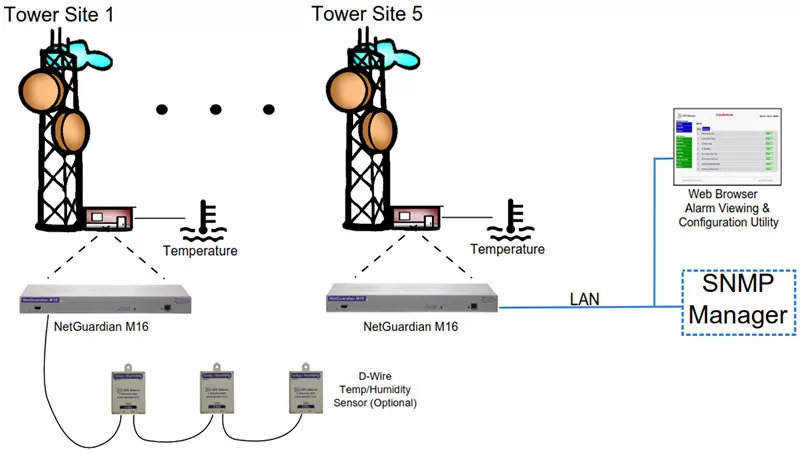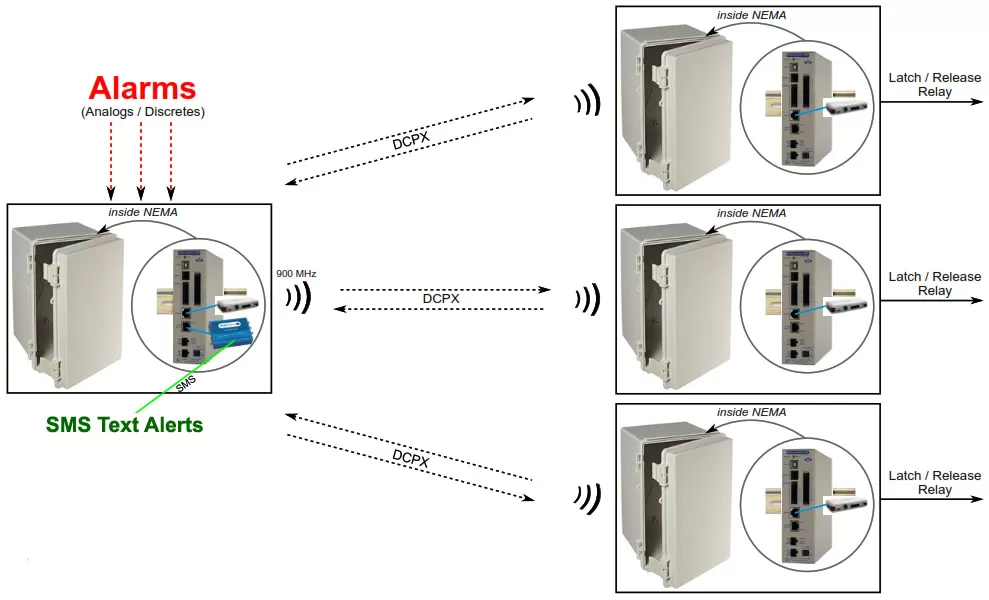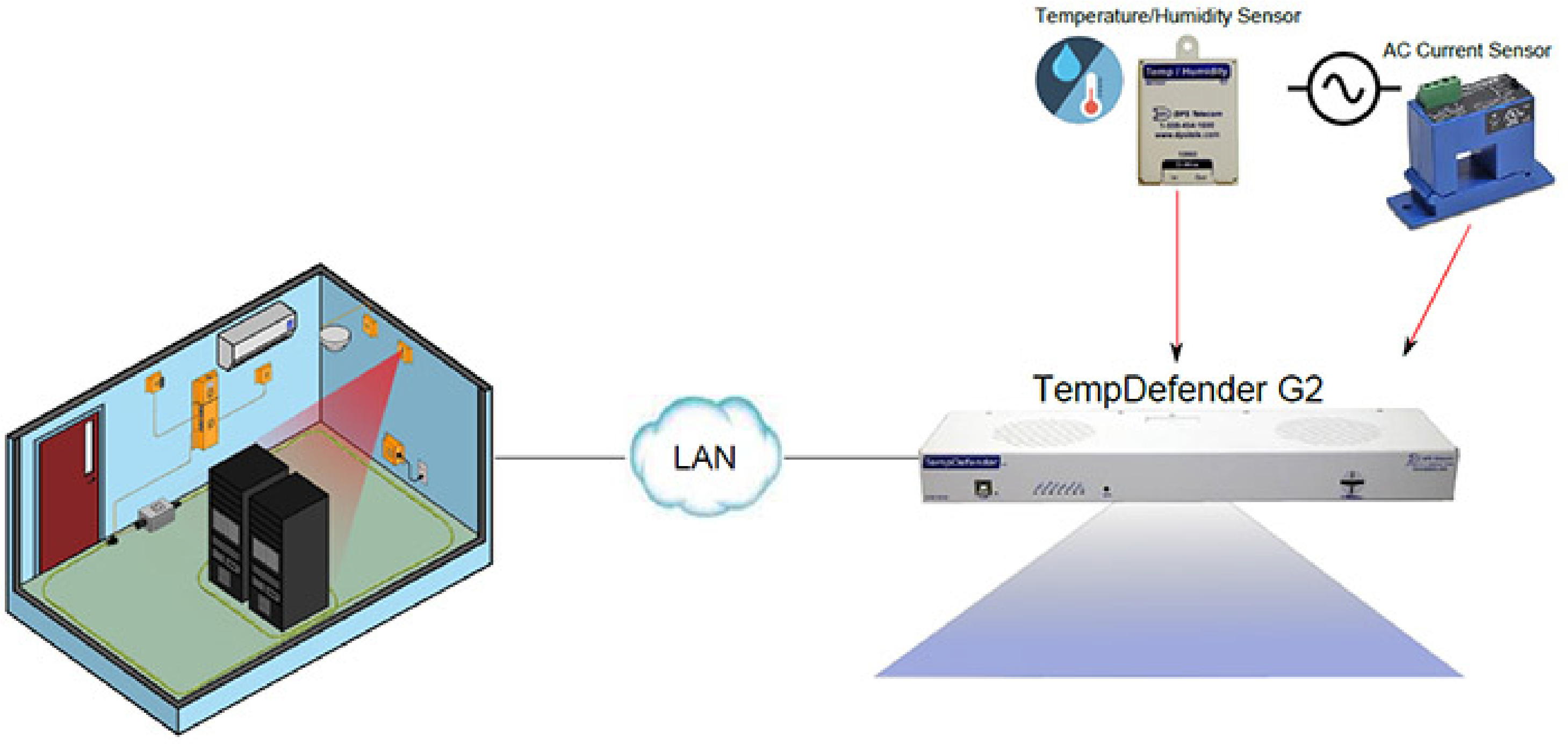Check out our White Paper Series!
A complete library of helpful advice and survival guides for every aspect of system monitoring and control.
1-800-693-0351
Have a specific question? Ask our team of expert engineers and get a specific answer!
Sign up for the next DPS Factory Training!

Whether you're new to our equipment or you've used it for years, DPS factory training is the best way to get more from your monitoring.
Reserve Your Seat TodayYour radio sites, by definition, are spread out across a wide area. They tend to be in remote places like mountaintops.
That's why you need good monitoring. If something is going wrong, you must know about it immediately.

My equipment is frequently used to give you the radio site monitoring you so desperately need. To help you plan your system, let's review some of the recent proposals I've built for people who called me and started a project with me:
This project involved a very large number of radio devices, all presumed to be emitting alarms as SNMP traps (or upon request as SNMP GETs). The challenge here was producing "Device Modules" for T/Mon, which are basically templates that tell T/Mon what alarms to expect:
Thanks again for contacting us regarding your upcoming project. Based on your conversation with Benjamin and Andrew, we understand you are looking to get a budgetary quote on an SNMP Management System for some Ericsson Microwave Radios.
This quote is meant to be budgetary and a first step forward to accurately quoting the solution. I have, however, quoted a firm price per Device Module. This assumes a final purchase quantity of at least 50 - and that all of the devices use the SNMP protocol.
In this complex system, decoders communicate via RS232 to terminal servers. The IP traffic then goes to T/Mon for monitoring. Other terminal servers and TrapRelay 64 devices communicate with encoder I/O.I expect that this will be useful for you as you propose the project to the end user. Our versatile T/Mon Master Station supports a wide range of devices from other manufacturers, including but not limited to the following:
- Aprisa XE of 4RF Technologies
- Osilloquartz 5420 of ADVA
- SAM 5620, SAM 7210 Syslog, SAM 7705, and SAM 7705 Syslog of Alcatel-Lucent
- Cisco CTC, CiscoDWDM, Cisco Router 1940, Cisco Router IR809G-LTE-NA-K9, and Cisco Switch of Cisco
- GE EC5, GE ElectroBlox, GE ElectroLogIXS, GE VHLC, GE WMS Server of GE
- Channel, DBS, GWB, MME, NetSentry, Other, SAR, SAS, TRSserver of Harris
- Constellation, Eclipse, Provision, Sageon of generic SNMP.
You will notice we have made this proposal with options as we are still waiting on confirming what specs are truly needed. We have also selected a -48V device, if a different power input would be needed please let us know and we can gladly revise.
This project was very typical for DPS. We simply had transmitters to monitor, including and especially against the very real chance of lightning damage:
I understand that you need:
- Remote monitoring of your radio transmitters.
- Automatic deactivation of a transmitter that is out of spec.
- General remote monitoring of various devices.
- Good protection from lightning damage.
- (Optional) A telco-grade SNMP manager that will monitor your new RTUs and various other SNMP equipment like TASC.
The NetGuardian RTUs I've quoted here will:
- Remotely monitor your transmitters with a combination of PTT (discrete/digital input triggering measurement) and an analog input (measuring indicated watts output).
- Signal transmitters to turn off with a discrete/digital output when they are at risk of damage.
- Collect other alarm data using sensors and equipment discrete/digital outputs.
- Protect your I/O (either 16 or 48 pins) against lightning and other surges.
- Optionally, the T/Mon I've quoted will collect SNMP data from your SNMP equipment (TASC, etc.) and also your new DPS NetGuardian RTUs.
In this case, the equipment for the VHF radio project had already been deployed into a rail system. Multiple T/Mon alarm masters were installed.
The goal here was to renew the expiring maintenance contract, which DPS offers to keep both software and hardware upgraded. Maintenance agreements, which we call our "Gold Plan", are also popular when CapEx budget is plentiful, but OpEx budget is harder to come by:
I have prepared this proposal to extended the metro rail's maintenance agreement for your three T/Mon devices.
These are the T/Mon units that you manage. From discussion with your team, we understand that you would like to make sure the Maintenance Agreement covers the remainder of your contract with the metro rail system. You will find 2 quotes, each covering all 3 T/Mon units:
- A single month (June 2022)
- 3 years (July 2022 - June 2025). This is an extra year above-and-beyond your contract requirement, but there is no reason not to take advantage of our standard "3rd year free" discount policy.
You'll notice that one of the 3 T/Mons is a "secondary" unit in a redundant configuration. We discount maintenance agreements for secondary systems by 50%. That discount is shown in these quotes.
You will read about the 8 benefits of the T/Mon Gold Agreement, however the bottom-line reason for companies who are curious about network protection and best practices are:
- Operational Critical Industries must have ongoing hardware & software support on their monitoring assets.
- Blindness to any portion of your network is not acceptable.
- Should trouble hit, you need the fastest path to restoration.
T/Mon Gold will not only entitle the metro rail / you to the latest version of T/Mon software, it also will provide your company with any upgrades that come out during the T/Mon Gold coverage period. Software updates are only 1 of the 8 major benefits of the gold membership.
The T/Mon Gold plan includes all of the following:...
Network that evolve over time can lead us to some strange places. In this project, the typical RTU architecture was turned on its head.
Instead of collecting relays (contact closures) and outputting SNMP traps, we needed a box that would collect SNMP traps and convert them to relay outputs. Fortunately, we built the TrapRelay product line for expressly that purpose.

As you'll read, there's not 100% coverage of all applications in this space yet. When that happens - and when a project doesn't have at least Qty 10 (or so) to justify custom development - I'm always honest about that with you:
I'm glad that we've had such a detailed conversation about your public-safety radio project.
After reviewing the hardware and firmware of our TrapRelay devices, there's one hurdle that I currently can't clear for you: Support for incoming SNMPv3 traps into our TrapRelay/RTU platform.
DPS supports SNMPv3 in a variety of ways:
- SNMPv3 traps outbound from all of our modern RTUs.
- SNMPv3 traps into our T/Mon master station.
- SNMPv3 GETs/SETs down from our T/Mon master station and/or into our modern RTUs.
Although SNMPv3 traps inbound to our TrapRelays/RTUs is on our road map for our upcoming new platform, that is at least several months out.
Still, I felt like I at least owed you a pricing reference, as the prices quoted here should be very similar once we are able to support SNMPv3.
Of course, the Alarm Point Duplicator devices we talked about via email eliminate the need for SNMP entirely, and I'm hopeful that a solution of that type might be useful for you in future projects.
I've reviewed your website, and I expect that this won't be your last project where DPS might be helpful. We frequently help integrators to handle the tricky bits by tweaking our designs to suit a specific project need.

This was a fairly typical project, including the fairly typical requirement to endure wide temperature swings. Some towers lack an HVAC-controlled equipment shelter, so gear installed in a cabinet must be rugged:
Thank you again for contacting us regarding your Tower Light project. We look forward to providing your client with a tower monitoring solution. Based on your correspondence with Ron, I have updated this proposal to include pricing for the NetGuardian LT G2, Temperature Sensor and Door Sensors.
Please note the NetGuardian LT has been change to a model that is Industrial Temperature (-30C to 70C operating temperature) and include secondary bracket for positive mounting on both rails of the relay rack.
By deploying this solution you will immediately gain the following benefits:
- Provide the ability to monitor tower lights automatically and continuously
- Provide the ability to take alarm inputs and report them in email.

Air Traffic Control (ATC) is about as mission-critical as equipment can get. When pilots can't get information they need, that's bad. When they get wrong information, that's even worse:
It was great speaking with you on the phone about your goal of controlling reliable power for ATC radio sites.
I understand that you need:
- Highly reliable "overbuilt" equipment that you can put into the field and virtually never have to remove due to failure. This should include an industrial temperature rating.
- A manufacturer that will test relay failure loads at various temperatures.
- A PDU that serves 12-16 channels.
- A PDU with electromechanical mains breakers that you can remotely reset.
- A design and a price that won't change out from under you like your existing equipment has.
DPS PDUs are:
- Built on our proven RTU/PDU platform that has continuously evolved since the 1990's, which is available in "Industrial Temperature" builds.
- Tested in our temperature chamber (and we'll be able to conduct new testing along the lines you've
- ecified).
- Currently built to serve 8-16 channels, depending on the options selected, and are subject to further customization at your request.
- Can be modified to include breakers that you can remotely reset.
- Supported for very long lifespans (10-20 years in most case) at prices that rarely increase. Although we sometimes must create pin-compatible G2 models due to changing availability of components over time, we aim to keep designs available for as long as you want to buy them.
Sometimes, you need to trigger external equipment based on the time of day. Generators must be exercised. Other infrequently used gear must be tested:
Based on our conversation a few weeks ago, I've quoted the NetGuardian DIN as a starting point. This hardware (+24V, DIN mount) should be about right for a timed activation controller for your radio transmitter.
I'm currently confirming the timing logic exists in the NetGuardian DIN firmware to do that. We frequently trigger alarms based on other alarms, but clock-based triggers are less common for us.
Based on your call work with Rick, we have prepared this proposal to provide a comprehensive alarm monitoring system for your radio network.
This proposal consist of several major components include a T/Mon SLIM at your central office and NetGuardian 240T at your remote sites. The T/Mon SLIM is designed for medium size networks to monitor NetGuardian and provide a central network alarm aggregation point. Provide notifications and maintain alarm history. Users will be limited to what access they have based on the role they play with in the orgainization. Powerful web based interface for monitoring and editing. Plus you'll also have GFX that allows you to create maps and see sites for a top level down to the individual sites.
This is perfect for seeing at a glance the health of your network.
The NetGuardian 240T is the perfect remote for your radio sites. It will utilize your existing T1's to report discrete alarms to the SLIM. It can collect up to 40 discretes, analog inputs and has D-Wire sensor technology. D-Wire is a excellent way to expand to collect additional analogs with cost effective D-Wire sensors. you can daisy chain these sensors and distribute them up to 300ft from the NetGuardian. D-Wire sensors include:, temperature, humidity and Airflow Vibration and even a few more discretes.
Together, these components form a powerful solution that's backed up by California-based support team that that will serve you well for many years to come.
The NetGuardian Q8 is probably my favorite example of highly custom DPS equipment. It is built explicitly to dock onto the back of a Quantar radio. It then provides SNMP-based monitoring of alarms detected via the Quantar's 50-pin amphenol connector:
Thanks again for contacting us regarding your upcoming project. We are looking forward to providing a monitoring solution for Quantar radios and temperature at your remote sites. Based on your conversation with Ron, we have prepared this proposal to include information and pricing for the NetGuardian Q8 and the TempDefender.
By deploying the NetGuardian or TempDefender you will receive the following benefits:
- Gain visibility to key items at your unmanned sites that will allow you to be proactive in correcting issues before a problem becomes critical.
- NetGuardian Q8 includes a windows based configuration utility for programming.
- Having a Telco-Grade, multi-generational, US-manufactured RTU that is built specifically for this type of high reliability operation to support your operations. Install the unit and let it do its job for the next 10-12 years.
- Report alarms to SNMP managers using SNMP v1 and v2c.
- DPS offers FREE LIFETIME FIRMWARE upgrades, which you can easily download to your NetGuardians via LAN to make sure you have all the latest & greatest benefits that have been developed.
By deploying the TempDefender, you will gain these additional benefits:
- A built-in, user-friendly web browser, and no special software to load on your computer for configuring the device.
- Easy installation of the temperature or humidity sensors that stream lines cabling and inspection which allows for quick install time, reduction of errors, and frees up technician time for other applications.
- Ability to view live temperature in your remote sites so you can proactively correct items that are out of tolerance before your critical equipment is damaged.
- The ability to set trigger points (Major Over, Major Under, Minor Over, and Minor Under) thresholds,giving greater detail of the health at your remote site.

As you can see, there are many different challenges that people face when it comes to alarm monitoring at radio facilities. You probably aren't facing all of the above, but I expect that these project notes were a useful reference for you.
To really get started, we should have a quick conversation. I can walk you through the basics, send you a customized diagram, and start putting a quote together for you so you can justify your purchase to management.
Just give me a call at 559-454-1600 or email me at sales@dpstele.com

Andrew Erickson
Andrew Erickson is an Application Engineer at DPS Telecom, a manufacturer of semi-custom remote alarm monitoring systems based in Fresno, California. Andrew brings more than 19 years of experience building site monitoring solutions, developing intuitive user interfaces and documentation, and opt...